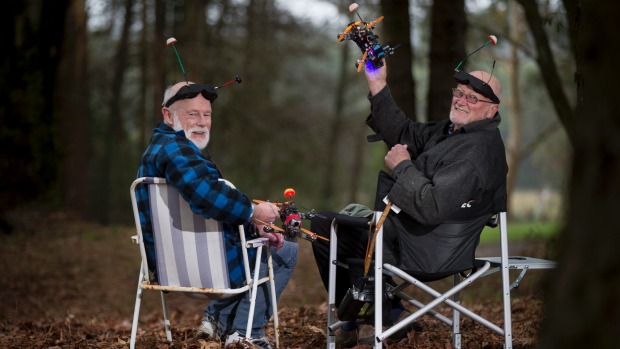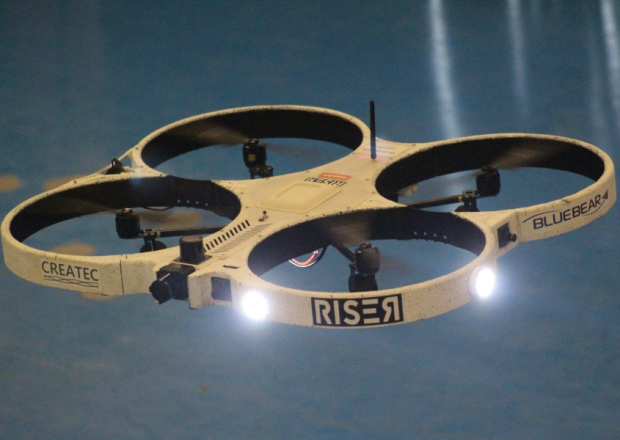http://www.suasnews.com/2015/07/37456/nz-new-drone-rules-criminalise-a-hobby/

BRUCE SIMPSON
As a young boy in the 1960s I spent many hours down at the local park or schoolyard, flying my carefully hand-built model aircraft.
It was such a buzz to see them take to the air – even if they usually did crash just moments later.
Over the 50 years or so since those halcyon days of my childhood, I have continued to enjoy a hobby that exercises the body and the mind. Far better to be outdoors enjoying the sunshine and summer breezes than spending hours in front of the dim glow of a computer screen – as so many of today’s kids are given to doing.
In my entire 55 years of flying model aircraft, I have never once injured anyone nor damaged anyone else’s property – and that’s despite being a very active participant of the hobby. Most of the time I was flying the only rule was ‘use common sense’ – and obviously this has worked pretty well for me and the thousands of other Kiwis that have enjoyed this innocent pastime. I have searched high and low but can not find any records of anyone dying or harming another in New Zealand as a result of this hobby and it seems that the only injuries sustained seem to be related to the operator’s own body and small propellers – sometimes painful but not fatal.
So it was with great sadness, that I read through the CAA’s new regulations for the operation of radio controlled flying models and drones – now collectively called “remotely-piloted aircraft”. How tragic it is that in one fell swoop of the regulator’s pen, those who fly these craft for pleasure and relaxation are now treated like criminals and have effectively been stripped of the rights they’ve enjoyed for so long – despite the fact that this hobby has an outstanding safety record?
No longer can a father and his young boy just walk down to the local schoolyard or park to fly the cheap toy model purchased online from China or carefully hand-crafted over a long series of winter evenings. Although these craft may weigh just a few tens of grams, the new regulations consider them to be every bit as menacing, risky and dangerous as the much larger professional drones used by commercial operators.
If you or your children fly their tiny toys anywhere, without first obtaining the permission of the property owner over which they will briefly soar, then a $5000 fine is in the offing.
What’s more, even if the local council sets aside a small park or reserve in which you have permission to fly, you must also seek the permission of anyone else who is using that area or who enters that area – lest you face another possible $5000 fine.
This leaves me asking – what has gone wrong with this country?
Why are we treating children and responsible adults like enemies of the state, threatening them with huge fines for doing nothing more than that which they’ve been doing for decades, in complete safety and in harmony with the world around them.
The ironies are abundant and quite worrying.
I can walk across any piece of land in New Zealand without fear of being fined or imprisoned – at worst I’ll be asked to leave and possibly trespassed. If I have a full-sized aircraft, I can fly it across almost any piece of land in New Zealand with impunity. However, if my child flies his 20-gram toy over the same land without gaining the expressed prior permission of the landowner, he has committed an offence under CAA’s new regulations; an offence of such magnitude that it warrants a $5,000 fine. How does that work exactly?
CAA tell us that these new regulations are risk-based and that the more risky the operation, the tougher the regulations and penalties. So please explain to me how it is somehow less risky for a commercial operator to fly his very large, very heavy, potentially lethal drone over my head without my permission – than it is for my child to do the same with his feather-weight 20 gramme toy? (pictured)
It would appear that CAA’s definition of risk is significantly different from my own, or that of anyone else I have spoken with.
Clearly CAA failed to consult with credible independent experts before conjuring up these new regulations. For example – they stand to have a decidedly negative impact on our tourism industry.
In most countries around the world, it is legal to fly recreational drones in public places – so long as you adhere to a few commonsense rules. Sadly for us, it is now illegal for anyone to fly a drone in a public place without prior consent. In the case of most of NZ’s landscape, obtaining that consent will likely be nigh on impossible for someone who’s only in the country for a few weeks. Already I have heard from a number of regular tourists to New Zealand who have said they will be striking this country from their list of preferred destinations.
Why is this?
Well these are the early-adopters who love NZ’s adventure-tourism attractions. These are the people who have already replaced their 35mm camera and camcorders with a flying camera in the form of a drone. They aren’t satisfied with 8×5 glossy snapshots of their holiday, they want high definition video of all the places they visit – taken from an aerial vantage point. They want to use their drone to get incredible external footage of them whizzing down our ski slopes.
Whilst such things are totally legal in most other countries – try it in New Zealand after August 1st and you could cop one of those $5,000 fines for your troubles.
CAA’s new regulations have clearly made NZ a much less desirable destination for the young, affluent tourist who has money to burn and a yearning for the latest gadgets. What’s more, as drone-based cameras become more commonplace, a greater percentage of our tourist market will opt for more “drone-friendly” countries than NZ.
Does our tourism industry even realise what they’re about to lose? Were they even consulted? I strongly suspect the answer to both questions is a resounding “no”.
So congratulations CAA – you have criminalised a hobby and are twisting a knife in the belly of our adventure tourism industry through your poorly conceived regulations.
Of course if you want to sidestep many of these restrictions, you can simply pay CAA a large fistful of dollars and then have the right to fly pretty much anywhere you want – regardless of the concerns of those below your craft. Yes, somehow, the payment of money is a sure-fire way to reduce risk – or so it would seem.
All I can deduce from this is that we have yet another case where the rights of New Zealanders are being erased and replaced by “privileges” that must be purchased from the appropriate government agency.
August 1st, 2015. A sad day for children and a sad day for the freedoms and rights of Kiwis.














